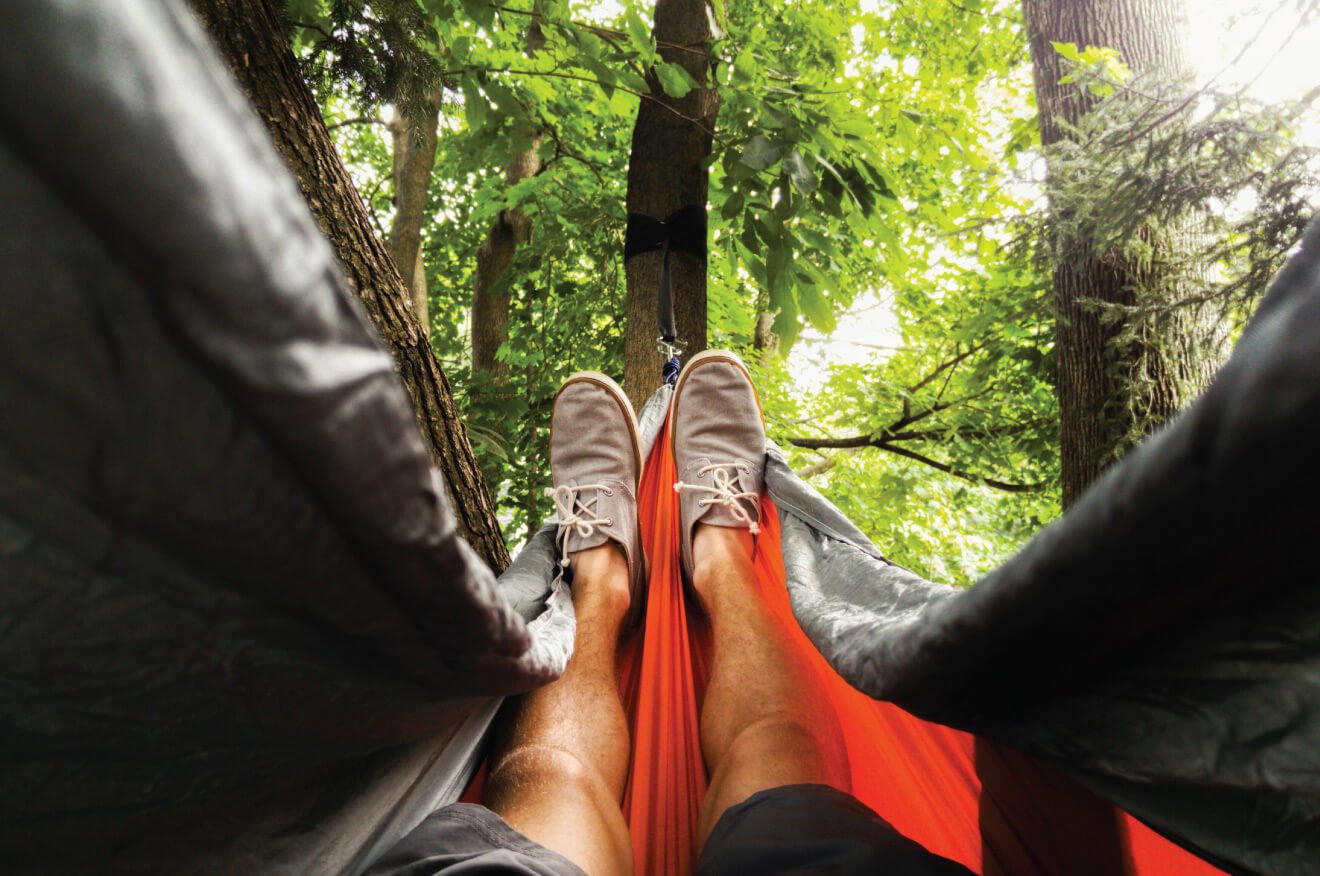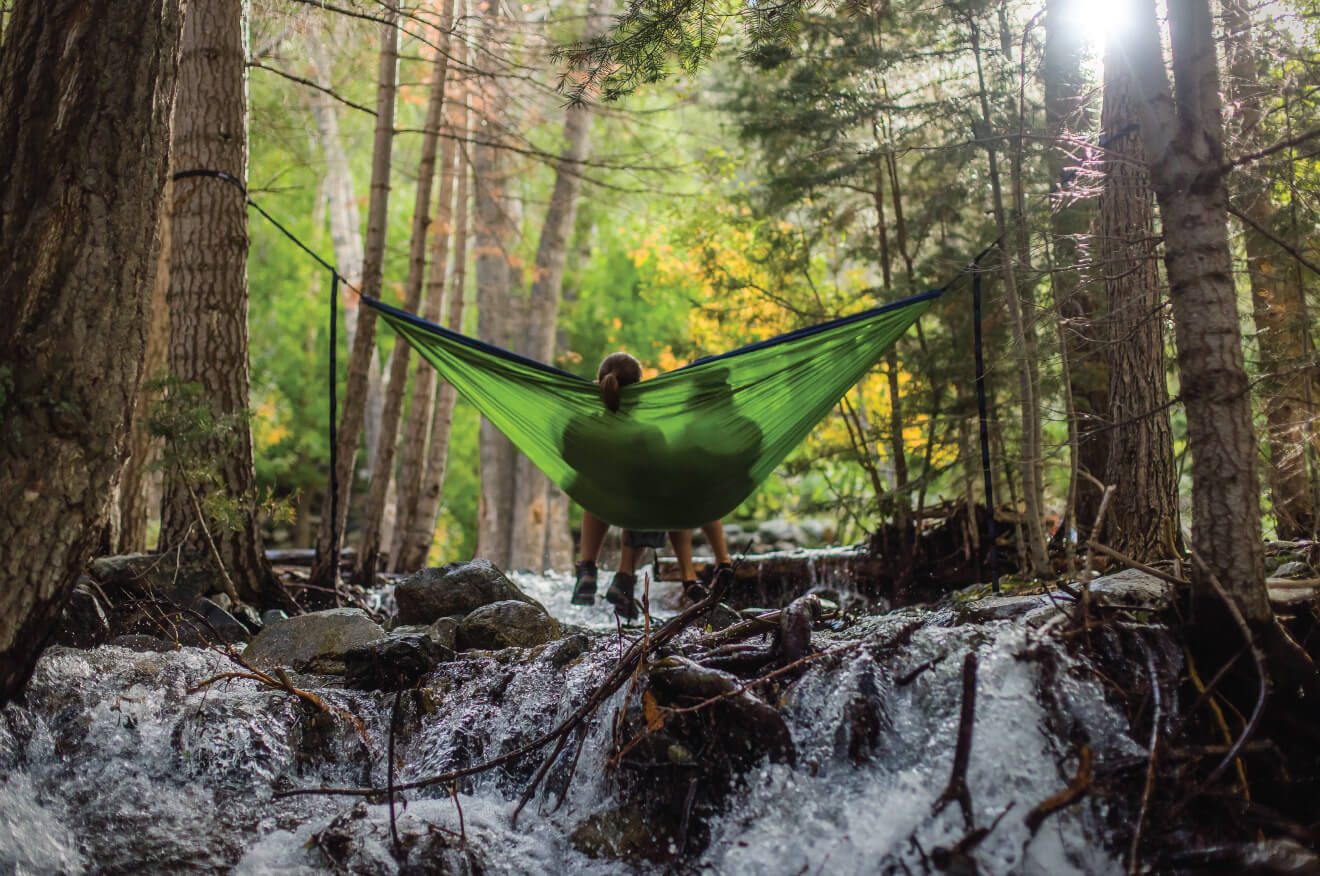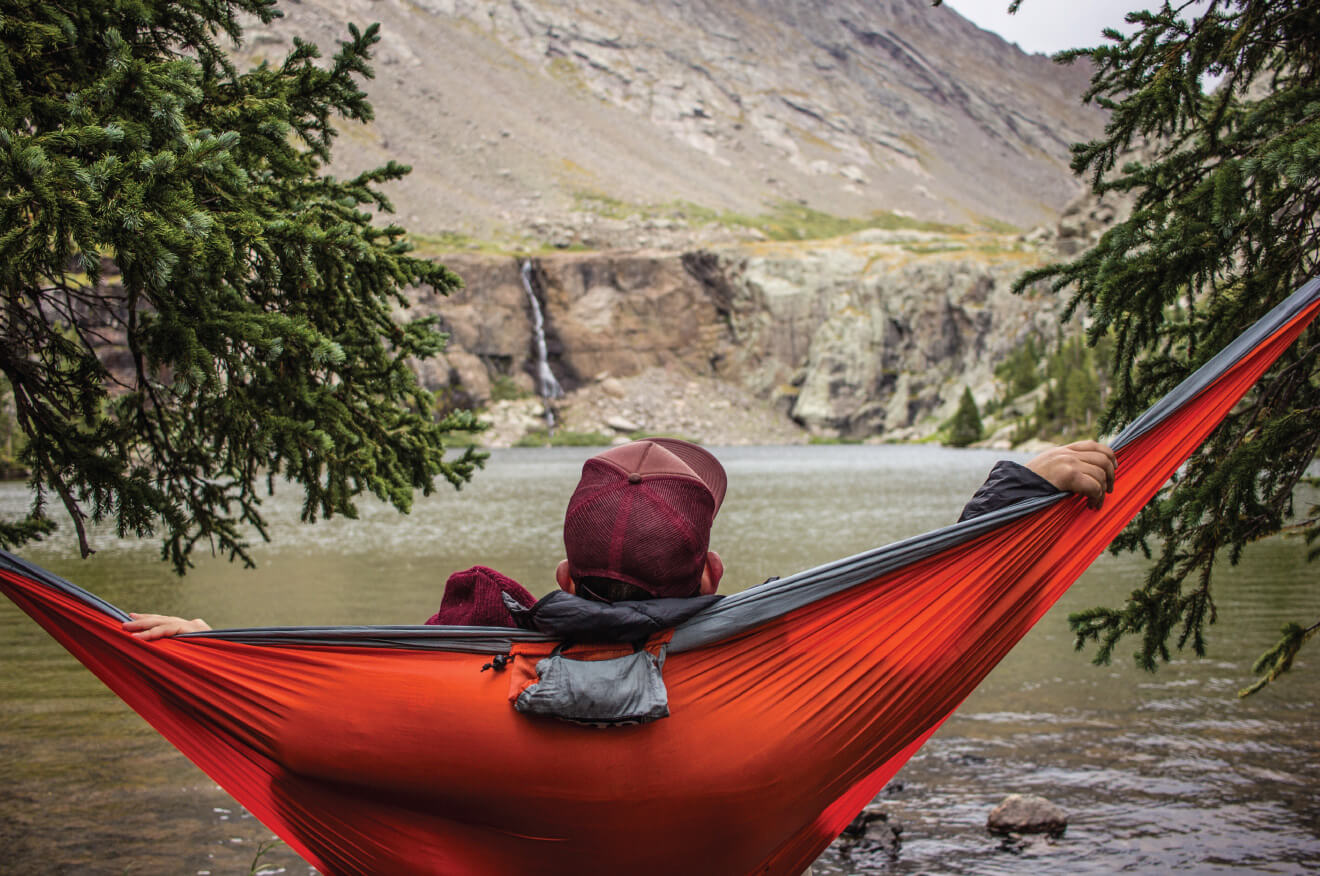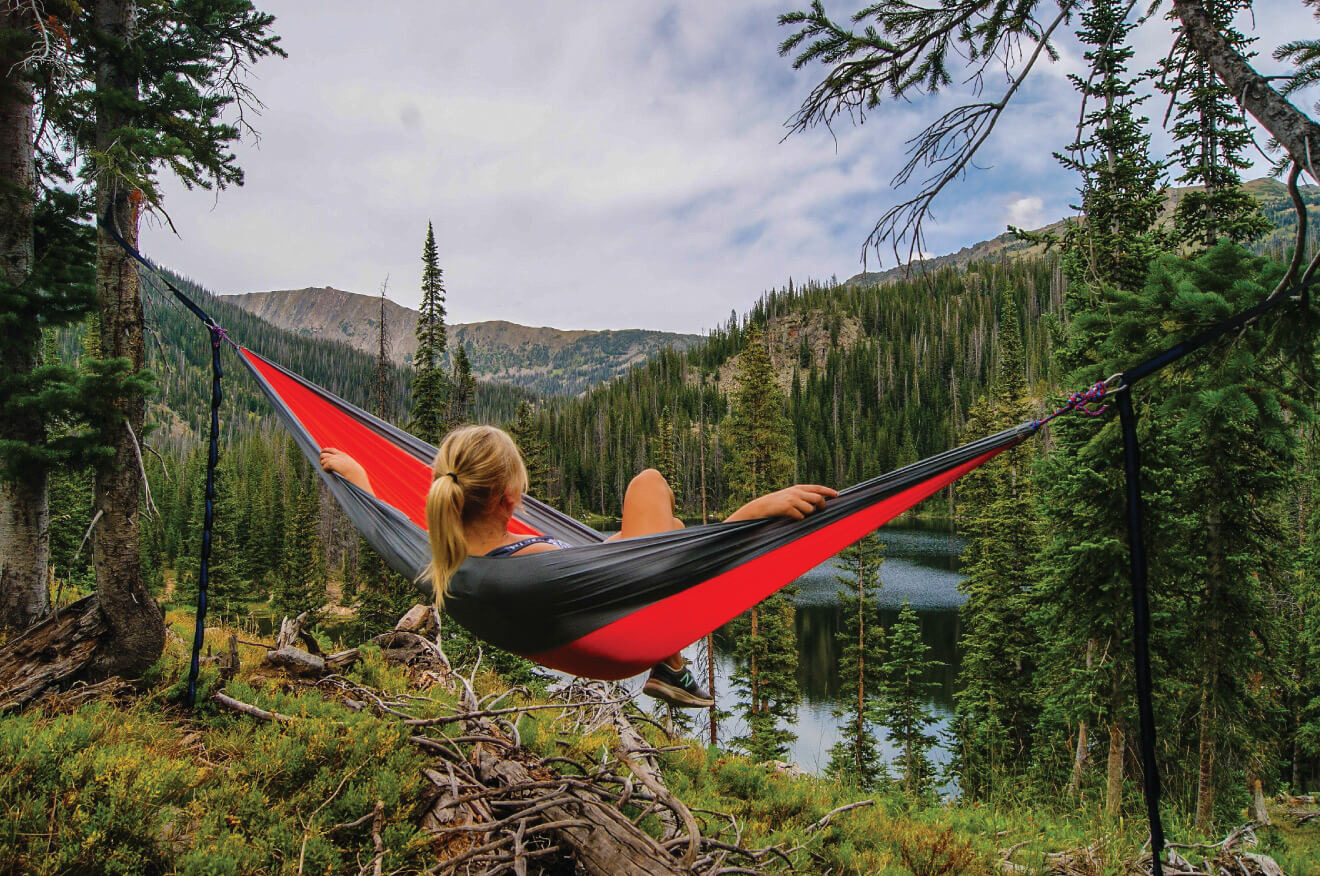 “Hammocking” seems to be an activity that’s gaining momentum around the nation, especially amongst college-aged people; and it’s no wonder why. There’s an interesting sense of freedom that comes from lying on a large piece of hanging fabric between two trees. The time spent kicking back and relaxing brings a sense of pure tranquility. If you’re a human being, you run into stress daily. If you’re a student, that stress can be even worse. Whether you’re an outdoorsman or a bookworm, the hammock is a staple of elevated student living.
“Hammocking” seems to be an activity that’s gaining momentum around the nation, especially amongst college-aged people; and it’s no wonder why. There’s an interesting sense of freedom that comes from lying on a large piece of hanging fabric between two trees. The time spent kicking back and relaxing brings a sense of pure tranquility. If you’re a human being, you run into stress daily. If you’re a student, that stress can be even worse. Whether you’re an outdoorsman or a bookworm, the hammock is a staple of elevated student living.
If you’ve never been hammocking, you may not understand the hype. Fortunately, hammocking is an activity that anyone can do on any budget. Very little stands between you and suspended leisure and bliss. You can easily find great hammocks that will suit all your hammocking needs for $25 or less on Amazon. So, grab a friend and read on as we walk you through the basics of hammocking in three simple steps.
 1. Choose your Hammock
1. Choose your Hammock
Although there are several types of hammocks, don’t overcomplicate your decision. The type of hammock you purchase should depend on your personal preference and what you plan to use it for. Here are three different hammock designs, the pros and cons, and what they’re best suited for:
The Spreader Bar Hammock
Good: This hammock’s main purpose is backyard comfort and ease. The bars on either side keep the hammock stretched flat beneath you, giving you more of a bed-like surface. As long as you both have a good sense of balance, this hammock can be used by two people. These hammocks are often hung on a stand and used in backyards, and best enjoyed with a cool glass of lemonade.
Bad: While these hammocks can offer a comfortable experience, they’re not nearly as portable or versatile as the other hammocks on our list. The length of the spread bars greatly limits the ability to throw this hammock into a backpack. Depending on the material and quality (or cost) of the hammock, these hammocks often need to be kept dry to avoid mold or mildew growth on the fabric or the weakening of the wooden spreader bars. They’re typically the most expensive of the options listed here.
Conclusion: If you’re the type that enjoys your own backyard, this hammock is for you. However, if you plan on going anywhere with your hammock, you should probably consider another design.
The Brazilian Hammock
Good: Widely regarded by as the most comfortable hammock, the Brazilian hammock offers a fantastic combination of comfort and portability. Made from a blend of cotton and polyester, these hammocks are generally very spacious. Because they don’t have any spreader bars, they roll up nicely and usually fit into a backpack quite nicely. These hammocks are great to take on day trips or laid back camping trips. Depending on the weave of your hammock’s fabric, they usually serve as a good windbreaker in chipper spring breezes. They also have a great style factor worthy of mention!
Bad: Don’t let this hammock get wet. If you experience rain during any part of your trip it’s likely that your Brazilian hammock will remain wet for the remainder of your activities. Another con of the Brazilian hammock is its weight. If you’re looking to carry this hammock for longer than a mile it can be a weighty burden.
Conclusion: This hammock is for the person who loves to take spontaneous day trips with friends or a significant other. It’s also great for easy camping trips to which you’re also bringing a tent, just in case. It is not for the avid hiker or backpacker who’s looking for a hammock to take on longer expeditions.
The Camping Hammock
Good: This is the ultimate adventurer’s hammock. Made from nylon parachute fabric, the camping hammock is lightweight, supports over 300 pounds, and when packed (straps and all) is usually smaller than a half-gallon of milk. They are available in both single and double sizes. If you plan on traveling ultra-light, the single-size camping hammock will be your bread and butter. These hammocks are durable and can hold up to tough weather conditions. If it gets wet, some time in the sun is all it needs to dry. This hammock remains a comfortable option, though not as comfortable as a Brazilian hammock. Because camping hammocks are most often sold with hammock straps and carabiners, they are extremely easy to set up and use.
Bad: As mentioned above, these hammocks don’t hold up to the comfort and leisure of a Brazilian hammock, especially when hammocking in pairs. If you’re using the hammock on a cold day or night, wind hitting the hammock tends to be pretty chilly.
Conclusion: This hammock is for those who need the most portability out of a hammock. Hikers, campers, backpackers, mountain bikers, and anyone else on the move would be best served by the camping hammock.
 Step 2: Plan your trip
Step 2: Plan your trip
Unless you’re headed to the park for an easy place to hang, it’s a good idea to plan out your trip.
The first thing you should know is where you’re going. Choose your venue based on how much time you spend there, other activities you may want to do, and who will be with you. Sometimes a quick trip to the park is perfect. Other times, a short hike to a beautiful location to set up your hammock is more what you’re looking for. Either way, know where you’re going so you can know what you’ll need to bring with you.
Bringing the right things to a hammocking trip can really enhance your experience. Great things to bring may include tasty snacks, plenty of water, mosquito repellant, sunscreen, a pocket knife, and a blanket.
Finally, always check the weather forecast before you leave. Skies may be sunny when you set out, but you don’t want to run into an unexpected rainstorm. If you’re going somewhere far away, make sure you check local conditions and forecasts.
 Step 3: Be smart, be safe, and have fun!
Step 3: Be smart, be safe, and have fun!
Although hammocking is a relatively safe activity, you can get seriously hurt if you are careless.
If it’s your first time hammocking, practice setting up your hammock in your yard before you go anywhere else. If you don’t have hammock straps and carabiners, do some quick research and learn which knots are safe to use. Use rope that can easily support at least twice your weight.
Don’t set up your hammock anywhere you shouldn’t. That includes private property, steep hills, near cliff edges, or over rocks or sharp objects.
Remember to leave anywhere you’ve setup your hammock just how you found it–or better, if possible.
Follow these safety guidelines and you’re guaranteed to have a rewarding hammocking experience!
